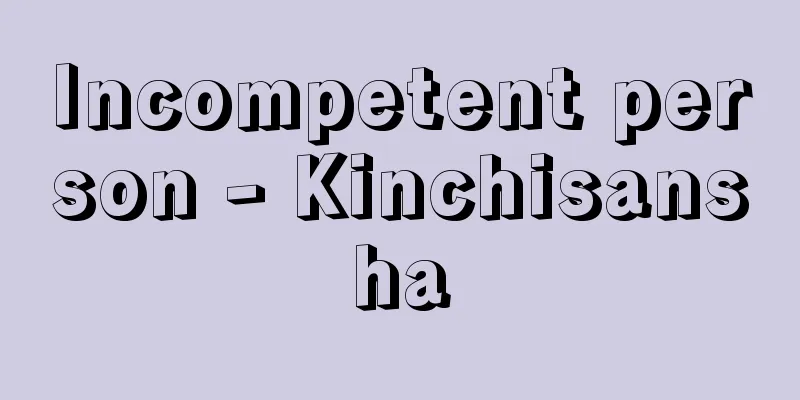Tea Fighting

|
A type of tea ceremony in which participants compete to distinguish the color and flavor of teas that are produced in different regions. It became extremely popular from the end of the Kamakura period to the middle of the Muromachi period around the time of Ashikaga Yoshinori. The origins of tea competitions can be found in the Song dynasty in China. Cai Xiang (1012-1067) used the word "test" in his "Charu," and Fan Zhongyan (989-1052) also wrote a "tea competition song," in which participants competed from differentiating tea by color and judging the degree to which the tea and water blended together, to competing over the quality of the tea's flavor. In Japan, drinking tea in groups was prohibited by the Kenmu Code (1336), but the refined art of Basara flourished, and the Nijogawara Graffiti began to sing about the fad of ten sticks of tea. In the beginning, the Moromoriki, for the third year of the Ryakuo era (1340), states that "ten kinds of honpihari bets were made, and the Gion Shake Kiroku also records a gamble for the "ten kinds of honpihari bets," in which honpi tea contests were held with bets. This was a game in which participants competed to drink Toganoo tea, which is honcha, and tea from other regions, which is non-tea. Later, the main focus became the Jushu-cha (tested tea and non-tested tea), which is a tea contest of four kinds of tea, ten servings each, regardless of whether it is genuine or not. Tested Jushu-cha uses four kinds of tea, first wrapping three kinds of tea in four servings, and wrapping one serving of the other kind as a guest tea. Next, participants try one serving of each of the three kinds of tea, and try to guess which of the remaining ten servings they will drink. There are also Goju-cha, Shichiju-cha, and Hyaku-cha games in which ten kinds of tea are played five, seven, or ten times. In addition to the above, there are other ways to play tea contests, such as Shichisho-cha, Rokushoku-cha, Sanshu-mei-cha, Shiki-cha, Genji-cha, and Keizu-cha. There are many unknowns about how to play these games. However, with the advent of Shoin-cha and Soan-cha, it gradually declined, and by the time of Sen no Rikyu it was called Kabuki-cha and only remnants remained. In the mid-Edo period, however, it was adopted as one of the Seven Tea Ceremonies of the Sen family as "Cha Kabuki", and has continued to be practiced to this day. [Kouichi Tsutsui] Source: Shogakukan Encyclopedia Nipponica About Encyclopedia Nipponica Information | Legend |
|
茶の産地別による色や味を飲み分けて勝負を競う茶会の一種。鎌倉時代の末から室町時代中期の足利義教(あしかがよしのり)のころにかけて爆発的な流行をみせた。闘茶の起源は中国の宋(そう)代にみることができる。蔡襄(さいじょう)(1012―1067)は『茶録』のなかで「闘試」の語を使い、同じく范仲淹(はんちゅうえん)(989―1052)に「闘茶歌」があって、茶の色による識別や茶と水との融合度をみることから始まり、茶の味のよしあしを争うところにまで及んでいた。わが国では、『建武式目(けんむしきもく)』(1336)によって群飲佚遊(いつゆう)が禁じられたものの、婆娑羅(ばさら)の風流は盛んになり、「二条河原(がわら)落書」によって茶香十炷(じっしゅ)の盛行が口ずさまれるようになった。当初は『師守記(もろもりき)』の暦応(りゃくおう)3年(1340)条に「十種本非張行懸(賭)物(ほんぴはりおこないかけもの)等被出之(これをいださる)」とあり、『祇園社家(ぎおんしゃけ)記録』にも「本非十種茶」の勝負記録があって、賭け物を出し合って本非茶勝負が行われていた。これは、本茶である栂尾茶(とがのおちゃ)と、非茶であるそれ以外の産地の茶を飲み分けて勝負を競う遊びである。のちには本非にかかわりなく4種十服の茶勝負である十種茶(有試茶と無試茶)が中心になる。有試十服茶は4種の茶を使い、まず3種の茶を4服ずつ包み、他の1種は客茶として1服包んでおく。ついで3種の茶の1服ずつを試し飲みして、残りの10服を飲み当てていく遊びである。五十種茶、七十種茶、百種茶というのも、十種茶を5回、7回、10回と催すものである。闘茶の遊び方には以上のほか、七所勝負や、六色茶、三種銘茶、四季々茶、源氏茶、系図茶などがある。その遊び方については不明な点が多い。しかし、書院茶や草庵(そうあん)茶の草創とともにしだいに衰退し、千利休(せんのりきゅう)時代にはかぶき茶といわれて残滓(ざんし)だけになっていたが、江戸時代中期に千家七事式の一つに「茶歌舞伎(かぶき)」として取り上げられ現在に至っている。 [筒井紘一] 出典 小学館 日本大百科全書(ニッポニカ)日本大百科全書(ニッポニカ)について 情報 | 凡例 |
<<: Tujia people (English spelling) Tǔ jiā zú
>>: Two Treatises of Government
Recommend
Charles Sealsfield
1793‐1864 Austrian author. His real name was Karl ...
Marbled - Shimofuri
It is meat with fine fats in a marbled pattern be...
Shijo Miyashita - Shijo Miyashita
Dates of birth and death unknown. A female poet o...
Sawagaya
One of the stage names of Kabuki actors. Used by I...
School newspaper - gakko shinbun
A newspaper is published by children and students...
Otama [village] - Otama
A village in Adachi County, central Fukushima Pref...
Pale-stained coral flower - Pale-stained coral flower
...The flowers are flesh-colored and grow in a de...
American elderberry - American elderberry
…Japanese elderberry is also called sekkotsu-ki a...
Gershwin, I.
…Gershwin composed this opera in three acts and n...
Laos - Laos (English spelling)
Lao is a country located in the eastern part of t...
"Film Technique: Hitchcock/Truffaut" - eigajutsuhitchokkutruffaut
…His last work was “I Can’t Wait Until Sunday” (1...
American beech - American beech
...Some species have dark purple leaves and weepi...
Chigi
These ornaments stand crosswise on both ends of t...
Albaha, H.
...Through these debates, the (1) theoretical sch...
Backpack ladder - Backpack ladder
A carrier used to carry luggage on the back. It is...
![Flugblatt (English spelling) [Germany]](/upload/images/67ccbee6366b7.webp)








